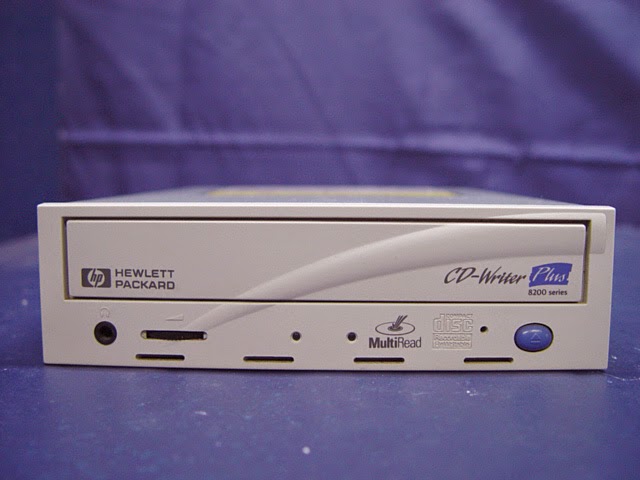The
CD-ROM is stand for Compact Disk Read Only Memory is a technology taken
directly form the audio world that has become standard equipment for computers.
This is an optical and read only storage device.
 |
| CD-ROM |
CD-ROM
Construction
Then term CD ROM refer to both the discs
themselves and the drive that reads them. A CD is made of a polycarbonate
wafer, 120mm in diameter and 1.2mm think with a 15mm hole in the center. This wafer base is stamped or molded with a
single physical track in a spitch or spiral configuration starting from the
inside of the disc and spiraling outward. The track has pitch or spiral
separation, of 1.6 microns (millionths of a meter, or thousandths of a
millimeter).
 |
| CD-ROM Construction |
CD-Writeable
There are two main type of recordable CD
drives and discs are available. One of them is called CD-R (recordable) and the
other is CD-RW (rewriteable). All the CD-RW drives can also function as CD-R
drives. All drives sold today are CD-RW. Those drives can work with either CD-R
or CD-RW discs.
Once a CD-R is written with data, it is permanently stored and can’t be erased. The
wite-once limitation makes this type of disc less than ideal for system backups
or other purpose in which it would be preferable to reuse the same media over
and over however, because of the low cost of CD-R discs is as economically
feasible as tape or other media. In a CD-R the writing process is completed be
burning an organic dye.
CD-RW
discs can be reused up to 1000 times making them suitable for almost any type
of data storage task. Most recordable CD drives are both CD-R and CD-RW in one.
In a CD-RW the writing process is completed by phase change of a metal alloy. The
writing speed of a CD-RW is less then a CD-R.
The
capacity of a CD-R or CD-RW in normally 650MB to 700MB.
 |
| CD-Writeable |











0 comments:
Post a Comment